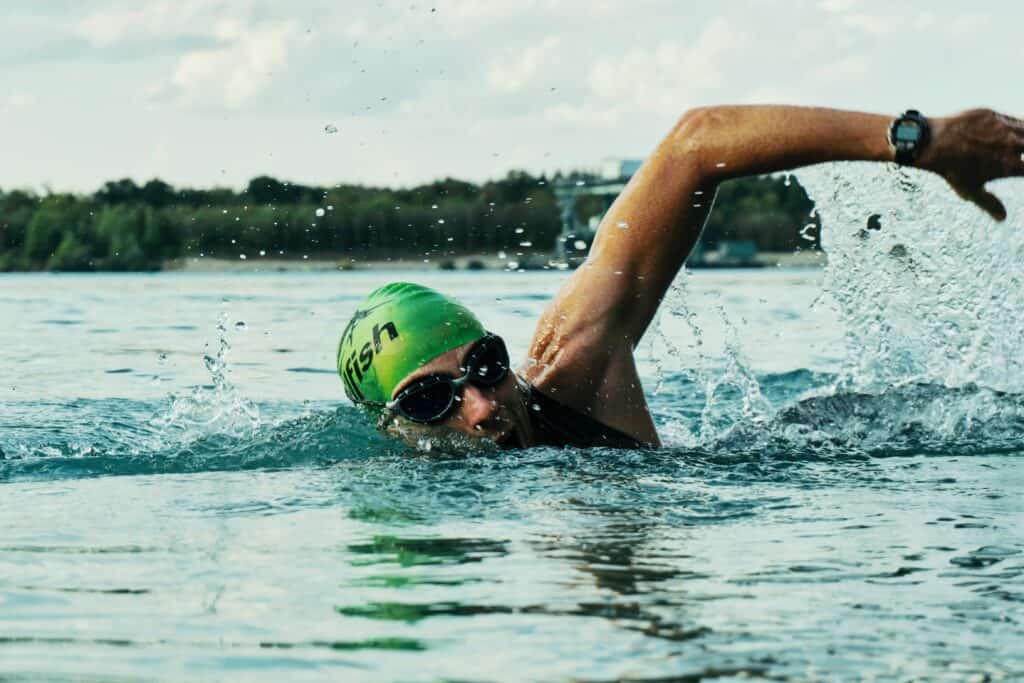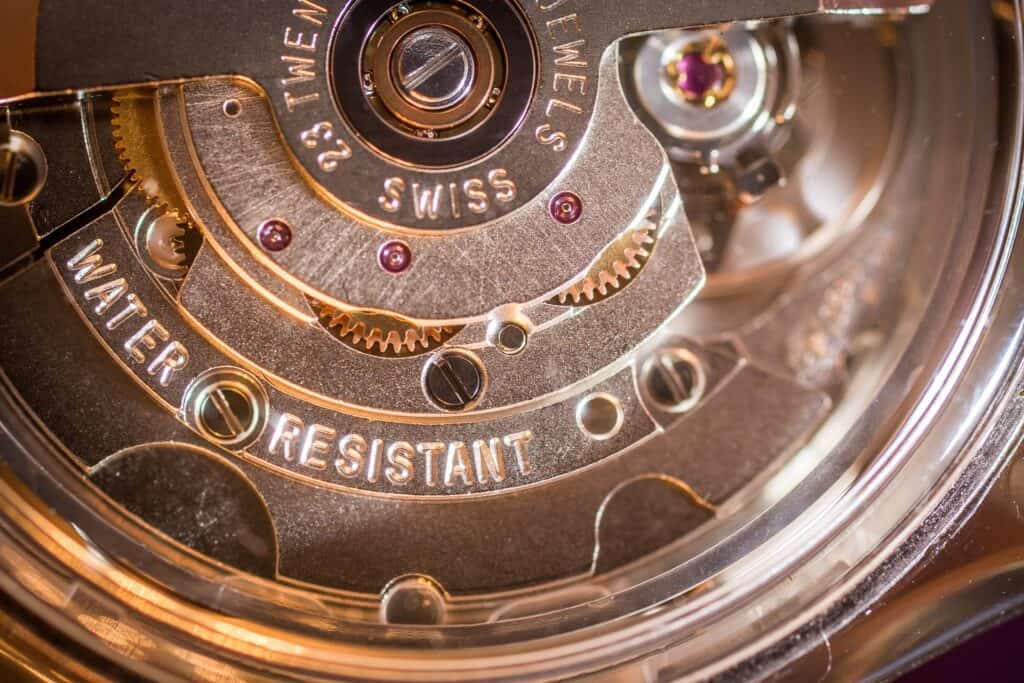Have you ever wondered how does a diving watch work? Are there special features that make it useful underwater? And what makes them so reliable for divers to rely on when exploring the depths of the ocean?
A diving watch is designed with specialized features and functions, making them an essential piece of equipment for any diver. These watches are built to withstand even the most extreme conditions, from waterproof cases to depth sensors and luminous hands.
In this article, we’ll explain exactly how a diving watch works and why they are such an invaluable tool for deep-sea exploration.
History Of The Dive Watch

The dive watch has a long and interesting history that stretches back to the 1600s. Early indicators of the dive watches were pocket watches, which sailors used during the 18th century for timing dives.
In 1926, Rolex created the first water-resistant watch, which English swimmer Mercedes Gleitze wore during her attempt at crossing the English Channel. This event marked a major breakthrough in waterproof technology and inspired other companies to start producing their own scuba diving watches in the following decades.
By 1941, Swiss manufacturer Omega introduced its iconic Seamaster 300, an extremely robust dive watch capable of withstanding depths of up to 300m. Over time, these dive watches have become more sophisticated with added features such as luminous hands or markers, decompression gauges, built-in altimeters, and more.
To this day, they remain essential tools for any serious ocean explorer!
How Does A Diving Watch Work?
A diving watch is a specialized timepiece designed to accompany divers underwater. As such, additional features have been incorporated over standard watches to ensure that the diver remains safe. Most notably, these include a depth gauge and water resistance rating up to 300m or more – far beyond that of regular watches.
Additionally, the inclusion of luminescent hands and markings on the face helps make readings easier in low-light situations. Avid divers should always keep in mind that diving watches are made for durability rather than accuracy; with their specialized functions, convenience is prioritized over accuracy outside of recommended depths.
Characteristics Of A Dive Watch

When it comes to underwater exploration, having a good-quality diver watch is essential. But what makes these watches so special?
⌚ Waterproofing
The first and most obvious feature of any divers watch is its waterproof capability. A good quality dive watch can withstand immersion in water up to certain depths (usually certified according to international standards like ISO 6425) while keeping the time and other features accurate. This means that divers can trust their watches no matter what kind of environment they enter – whether it’s murky water or even complete darkness!
⌚ Luminous Markers or Hands
For added visibility and convenience, many diving watches are equipped with luminous markers or hands to read the time, even in low-light or completely dark settings. This allows divers to keep track of how long they have been in the water without needing to use external lighting or relying on their own sense of time.
Additionally, some watches may also offer additional features, such as compass directions which further enhance their utility in aquatic environments.
⌚ Decompression Gauge
Another handy feature present in many modern dive watches is a decompression gauge (or depth gauge). This device monitors the diver’s current depth and warns them if they exceed any recommended heights set by their certification body.
In addition, it can also help reduce the risk of nitrogen intoxication — otherwise known as ‘the bends’ — which results from rapid ascent after an extended period spent at great depths.
⌚ The Band
The watch band or strap is what really makes contact with your wrist and is attached to the watch case. The watch band can be manufactured from rubber, plastic, stainless steel, or any other long-lasting material that is also comfortable to wear.
⌚ The Rotating Bezel
What sets a dive watch from others is its spinning bezel. Even the most basic dive watches feature a bezel that can be rotated. To keep track of how long you’ve been underwater, you can turn the watch’s spinning bezel from zero to sixty.
The first 15 minutes of the dive watch bezel are marked in one-minute increments, and the rest are marked in five- or ten-minute increments. As a result, the diver may know without a doubt how much time has passed underwater and when decompression stops need to be made.
⌚ The Automatic Movement
The movement of a dive watch is also extremely important. This refers to the internal mechanism which powers the watch, and in diving watches. This must be able to withstand the pressure of deeper dives while remaining accurate.
Quartz movements are increasingly popular due to their durability and accuracy. While some still favor mechanical watch movements for their traditional look and feel.
⌚ Modern Dive Watch Technologies
New technologies are continuously being integrated into diving watches, allowing for more precise monitoring of conditions below sea level. High-end models offer useful features such as built-in altimeters for altitude measurements, barometers for air pressure monitoring, and thermograms that measure water temperature changes over time. These tools provide divers with greater safety and control during their dives and look stylish enough to wear on land too!
How to Use the Dive Watch
Now that we have explored the features of a dive watch let’s look at how one should be used.
⌚ Setting the Time
Before taking your watch into any body of water, it’s important to ensure that the time displayed on the watch is accurate. Many divers’ watches come with an internal chronograph or a quartz movement to keep accurate time while submerged. Additionally, some models may offer more advanced features such as a perpetual calendar or altitude measurements. Both of which can be adjusted even after underwater diving.
⌚ Testing Water Resistance
After setting the time on your dive watch, it is essential to test the water resistance before making any dives. To do so, you must submerge the dive watch in clean tap water (not salt water) and press all buttons/crowns under pressure. If water penetrates or if there are signs of leakage, then it means that your watch may not be suitable for diving and needs servicing immediately.
⌚ Adjusting for Pressure Changes
Since pressure changes depending on depth when diving, you should adjust your dive watch accordingly. To ensure accurate readings during different depths of descent. Most modern watches come equipped with a depth gauge which allows users to easily change settings according to their surrounding environment and descent rate. It is important not to exceed established deco limits set by certification bodies at all times!
⌚ Recording Dive Data
Using a combination of sensors such as altimeter and thermometer readings. Most modern dive watches now offer additional recording capabilities allowing divers to track vital statistics such as air consumption rate. Temperature changes over time and total dive length accurately throughout their mission(s).
This data can then be transferred wirelessly onto compatible devices providing insights into how well one’s dives went while also helping detect any problems early on.
Frequently Asked Questions
Q: How can I find the best dive watch?
A: The best dive watch for you depends on your needs and preferences. Consider features such as water resistance, battery life, accuracy, and the ability to record dive data when purchasing. Furthermore, read customer reviews of the product to get an idea of its performance under pressure.
Q: Is Apple Watch Ultra waterproof?
A: The Apple Watch Series 5 is water resistant up to 50 meters, which makes it suitable for shallow dives. However, it is not a dive watch and should not be used for scuba diving or any other underwater activities.
Q: What is a unidirectional bezel?
A: Unidirectional bezels are an essential feature of any dive watch. This bezel allows for easy tracking of elapsed time underwater, with markings that only move in a single direction. The circular design ensures that users can accurately monitor the amount of time spent diving without accidentally resetting their readings.
Q: Can I use a stainless steel case dive watch for non-diving activities?
A: Yes, stainless steel dive watches are suitable for everyday use. In fact, many of these models offer a variety of features such as chronographs and altimeters, making them great all-purpose timepieces that can be worn on land and in the sea!
Q: How can a scuba diver use a dive watch?
A: Dive watches are essential tools for scuba divers. It provides accurate readings of the time elapsed underwater and helping to monitor air consumption rates. You can also use them to adjust settings according to depth and temperature changes. Making them great safety devices you should always wear while diving.
Final Words
Dive watches are essential accessories for any serious diver. Not only do they provide accurate readings of the time spent underwater. Furthermore, they also help monitor air consumption rate, temperature changes, and more. When selecting a dive watch, always keep in mind your individual needs and preferences. Don’t forget to test it for water resistance and leaks! Happy diving!
